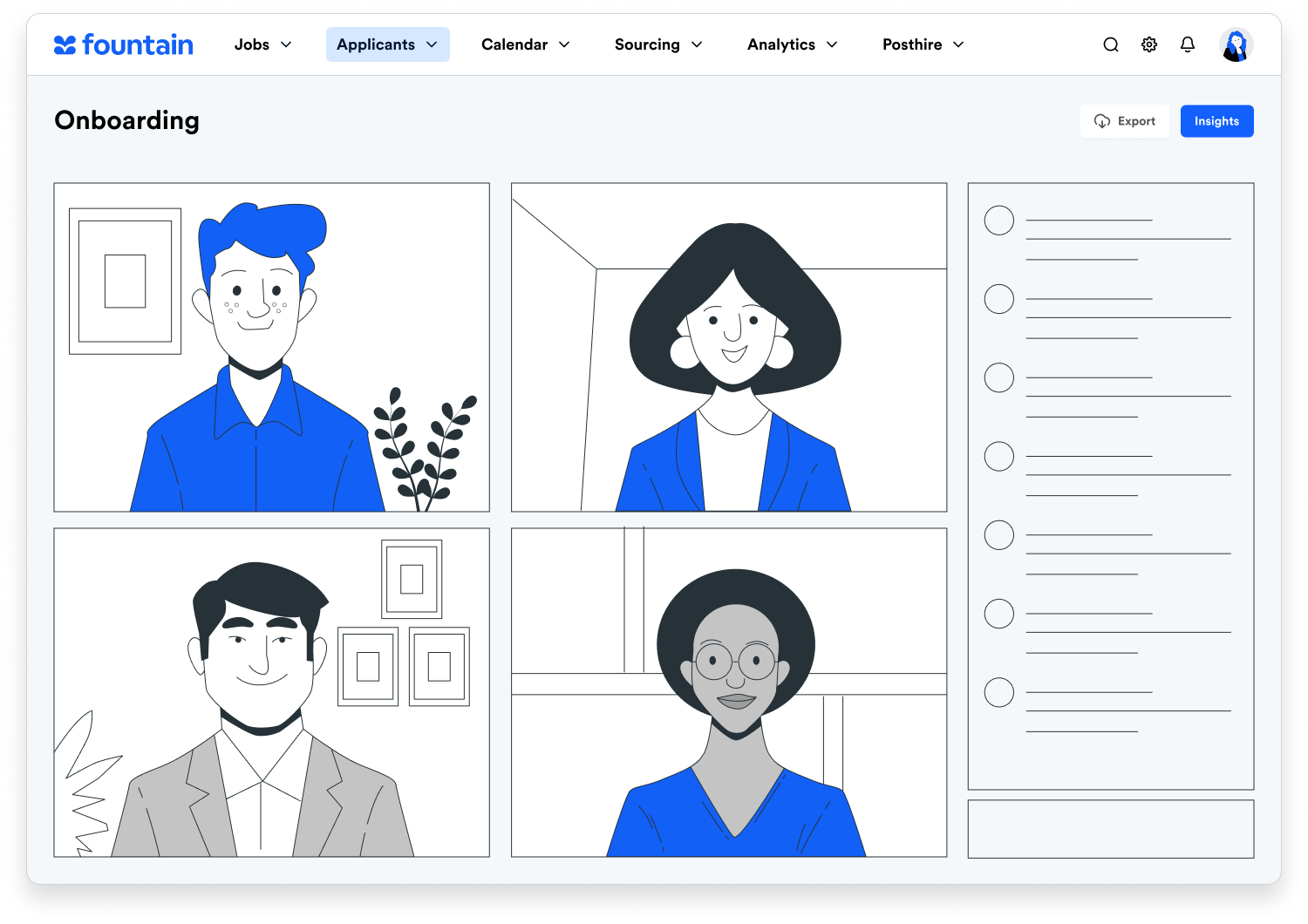Did you know? More than 80% of workers in the United States are frontline workers. These indispensable members of the economy work in industries like healthcare, transportation, logistics, grocery, and retail.
But did you also know that these workers require (and deserve!) an entirely different recruiting process compared to corporate or salaried workers?
In this post, we’ll explore who these frontline workers are; what they expect, want, and need when they apply for jobs; why it’s so hard to get their interest in your jobs; and how you can improve your processes to hire the best frontline workers out there. Let’s get started!

What it means to be on the front lines
Frontline workers work both behind the scenes and at center stage, keeping operations running afloat in dozens of industries. Examples of frontline roles include long-haul truck drivers, call center agents, delivery drivers, warehouse associates, cashiers, baristas, restaurant servers, and resort managers.
More than 2 billion people around the world belong to this category of workers. They are typically paid hourly and face a different set of recruitment processes compared to corporate employees.
For example, corporate hiring is often a time-consuming process that requires extensive rounds of interviews and vetting for just one candidate, while frontline recruiting usually involves hiring a larger number of people in a short amount of time, which means sifting through hundreds (or even thousands) of applications. These positions also may require special skills and competencies that aren’t required of corporate workers, such as licensures, certifications, and special training.
Modern frontline recruiting is multi-channel
Whether you’re sourcing, screening, qualifying, or hiring, frontline recruiting is no longer limited to one channel or even one system. Keep reading to learn how technology and other factors have diversified the way talent finds work and employers hire them.
Sourcing
The concept of a “job board” used to mean an actual bulletin board where recruiters would attach job opening information using push pins. Today, this term has extended to the digital world, and job seekers are scouring the internet looking for their next opportunity.
Screening
Interviews don’t have to be a time-consuming, in-person endeavor anymore. Recruiters can invite candidates to video interviews that they can complete right from their phones. If scheduling a convenient time is difficult, they can also perform asynchronous video interviews wherein recruiters send candidates a list of questions to answer and candidates can record their answers whenever they have time.
Qualifying
With technology and automation, recruiters can trigger the release of assessments to be sent to candidates who have qualified for this next step. Recruiters also can program background checks to be completed if and when candidates are ready for this step.

Onboarding
Once a decision has been made and an offer has been extended, new hires can upload documents, sign documents, and even complete onboarding tasks from wherever they have access to the internet.
See what a high volume recruitment process looks like in 11 detailed steps.
The challenges of frontline recruiting
Despite these advances in technology, HR departments and managers still face challenges when hiring at a large scale. These challenges include the high turnover rates that are common with frontline workers, lengthy hiring processes that lead to candidates dropping out before the finish line, and the use of corporate hiring systems to hire hourly workers.
As stated, frontline workers need a completely different system to make it through the hiring process swiftly and easily, and to help recruiters keep their operations up to speed.
Where to find the right candidates for the job
So where can recruiters find these frontline workers? The best place to start is where your ideal candidates spend the most time: on the internet.
Online job boards
Internet job boards range in cost (from free to costly) depending on the reach you want. The biggest advantage of these job boards is the ability to target by geography, skillset, or other qualifications you want your candidates to possess.

Social recruiting
Social recruiting kills two birds with one stone. By advertising job openings on your social networks, you’re establishing your employer brand in the public sphere. You’re also able to get your openings in front of a wide audience of job seekers.
Employee referrals
This is one sourcing method that takes the task offline. Your existing workers may be one of your best resources when it comes to finding new applicants. Offer incentives like bonus pay if your employees refer someone who is successfully hired.
Read 4 ways to build a funnel-wide solution for frontline recruiting.
Strategies for finding your ideal frontline candidates
Now that you know where to find your ideal candidates, you need to arm your frontline recruiting team with a few foolproof strategies to get them to apply to your jobs. Keep reading for our top strategic suggestions!
Enable mobile-first recruiting
As mentioned, the majority of frontline workers are likely spending a considerable amount of time on their mobile devices. So one way to make your application process amenable to this population is to make it mobile-friendly. From the application to interviews to document signing, look for ways to configure your application so that candidates can complete it from wherever they are.
Feed your frontline hiring funnel
Frontline recruiting should be a year-round activity, even if you’re a seasonal business. You never know when your dream candidate might appear in your recruitment funnel! By keeping your pipeline open to applicants at all times, you can build an applicant pool from which you can pull candidates if and when you need them.

Implement conversational AI for smarter engagement
Frontline job applicants have an endless amount of jobs they can apply to. To make your positions stand out, use conversational AI to keep candidates involved in a conversation about your roles.
To learn more about how to use conversational AI as part of your hiring process, click here.
Intelligent automation is leading the way
You’ve got your candidates’ attention—now you need to keep it. This is where automation can seal the deal and help your candidates get across the finish line.
Automated processes—like document uploads, communication alerts and reminders, and the movement of candidates through the hiring funnel—are the keys to implementing speed and efficiency in your hiring process. With a modern-day applicant tracking system (ATS), automation should come standard and should take care of what used to be mostly manual tasks.
By automating these stages and steps, your recruiters will be free to add more human touches to the process, improving interactions and infusing life into an otherwise hands-off journey.
What’s more, when you have hundreds of workers to hire, automation can keep your hiring process moving forward, even when you’re not on the clock.
The benefits of working with AI for frontline recruiting
Automation and AI are a powerful pair of tools for any frontline recruiting team. Together, they can decrease manual burdens, improve end-to-end candidate engagement, and ultimately improve time-to-hire.

For example, Candidate AI Agent helped one of our delivery customers slash time-to-hire by 95%, with the average time to source and hire an applicant taking just 8 minutes. As a result, this customer increased their hiring rate by 125%!
Finding your frontline workforce with Fountain
Today’s frontline workforce needs an application and hiring experience tailored to them, from the moment they learn about a role through their first days on the job. Most hiring teams still work primarily with tools made for salaried roles, where candidates spend less time online and more in one-on-one interviews and negotiations.
Fountain is the only enterprise-grade platform built specifically for hiring hourly frontline workers at scale. The platform leverages AI to move applicants through the pipeline faster, guiding them through the hiring and onboarding process and keeping them engaged throughout the lifetime of their employment, all in the same app.
Want to learn more about Fountain? Click here to talk to us today!

